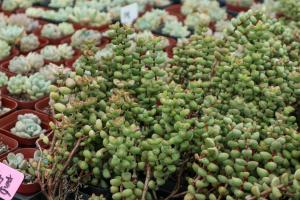Should I Take Aquarium Plants Out of Their Cardboard Pots?
When it comes to setting up an aquarium, live plants can provide numerous benefits. They oxygenate the water, help control algae growth, and offer a natural and aesthetically pleasing environment for fish to thrive in. However, it's important to take proper care of these plants in order to ensure they grow and flourish in the aquarium. This begs the question: should you take aquarium plants out of their cardboard pots?
What Are Cardboard Pots?
A cardboard pot is a container made out of compressed peat moss and cardboard. Aquarium plants are commonly sold in these pots as they provide a convenient and cost-effective way for sellers to package and transport plants to customers. The pots generally have small holes in the bottom to allow for water and nutrients to flow through.
Why Should You Take Plants Out of Their Cardboard Pots?
While plants can survive in their cardboard pots for a short period of time, it's recommended that you take them out and replant them for several reasons:
Soil accumulation: Peat moss is the main component of cardboard pots, which isn't the best soil substance for aquarium plants. Over time, peat moss can accumulate in the aquarium and cloud the water.
Restricted growth: Cardboard pots may not provide enough room for the roots to spread out and grow properly. This can result in stunted growth or even plant death.
Nutrient deficiency: Cardboard pots don't provide enough nutrients for aquarium plants. While the plants may survive for a limited time, they won't thrive if left in these pots.
How to Properly Replant Aquarium Plants?
Before replanting aquarium plants, make sure to thoroughly wash and clean the plants to remove any excess peat moss or other debris. Once this is done, follow these steps:
Choose a suitable substrate: Aquarium plants should be replanted in a nutrient-rich substrate that supports their growth. Gravel or sand mixed with plant-specific nutrient supplements works best.
Prepare the substrate: Rinse the substrate thoroughly and spread it evenly in the bottom of the tank.
Plant the aquarium plants: Gently place the plants in the substrate and spread out the roots to encourage healthy positioning.
Water the aquarium: Use a plastic bag or another type of cover to prevent the substrate from flying away. Fill the tank with water slowly to avoid uprooting the newly planted aquarium plants.
Conclusion
While it's tempting to leave your aquarium plants in their cardboard pots, it's best to replant them in order to ensure their health and longevity in the aquarium environment. By properly replanting aquarium plants, you'll create a natural and healthy environment for your fish to thrive in.

 how many times do yo...
how many times do yo... how many planted tre...
how many planted tre... how many pine trees ...
how many pine trees ... how many pecan trees...
how many pecan trees... how many plants comp...
how many plants comp... how many plants can ...
how many plants can ... how many plants and ...
how many plants and ... how many pepper plan...
how many pepper plan...































